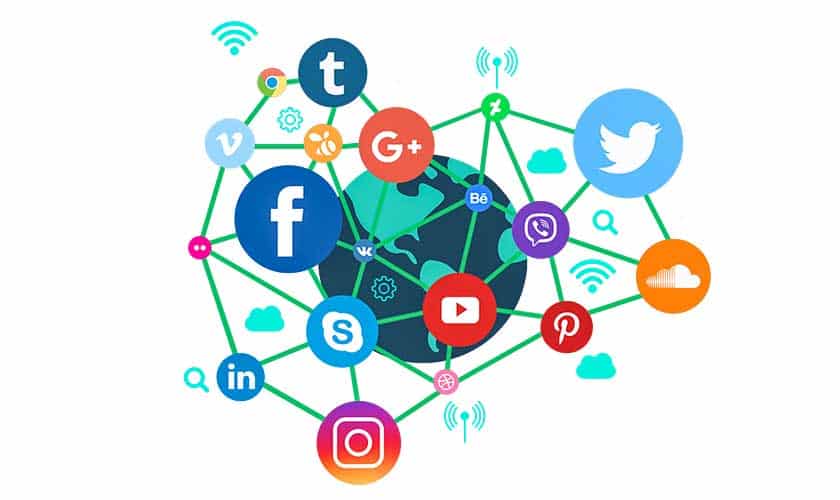Customer acquisition often gets more attention than customer retention strategies. However, retaining your customers could be where the money lies. Depending on the cited data, keeping existing customers can be more expensive than retention. But, the question is how an enterprise can cash in on all its loyal customers have to offer. Here is the definition of customer retention strategies and why it is crucial to all businesses regardless of size.
What is Customer Retention Strategies?
Generally, Retaining customers refers to the ability of a business to attract and maintain its repeat clients. Customer retention is measured using the customer retention rate, which refers to the rate at which a company can retain its existing clients. In the retail sector, Customer retention, can help understand how a business can meet the expectations of its customers and how positive their customer experience is. It goes beyond loyalty, which means retailers have to strive to fulfill the demands of their repeat customers.
The Importance of Customer Retention Strategies
Retaining existing customers is often far more profitable and feasible than acquiring new customers. Recent studies found that repeat purchases account for almost a quarter of the revenue in the retail sector. Research has also shown that a returning customer can spend 15% on a single order.Retaining existing customers is more than just profitability. Retailers can use it to gauge how healthy their relationship is with customers.
Not to mention, retailers can turn loyal customers into a brand ambassador, which may help bring in more customers to their store. Nearly three-quarters of consumers trust word-of-mouth than anything else when making a purchase decision. So, how can retailers drive customer retention to their stores?
Retention starts with the first interaction a potential buyer has with your brand. Here are some of the retention strategies that retailers can implement in their biz.
Implement Personalization

Online and in-person technologies are making personalization more accessible to retailers. Businesses can now use POS systems to track the purchase history of their customers and sync it with a loyalty program. That enables entrepreneurs to feed the data to trends that can help keep up with trends. Research has found that 65% of customers are comfortable investing in a brand that understands their purchasing history.
Personalizing your customer approach doesn’t have to be fancy. A small effort, like including the name of a customer in the list of loyal customers may encourage repeat purchases. Implement this by adding a mirror, a dry erase board, or chalkboard where you can write the names of your loyal customers. It is an effective strategy, given that most customers would prefer to shop from a brand that recognizes their name.
Another simple way to personalize the shopping experience is to interact with customers one-on-one. Make an effort to find the best product for a customer in need. For example, a fashion retailer can personalize the shopping experience by finding what each of their customers wants and what their preferences are. Make an effort to walk the customer through the different brands available and hand-pick shoes and clothes that best fit their lifestyle and figure. Bring out the chart to make it easier to compare different brands.
Be Proactive with Customer Service
The customer support team is an integral part of the customer retention initiative. Workers are the pillar of your relationship with customers and an extension of your brand. So, building a strong customer relationship can lead to more repeat purchases. Hire educated associates who can use thoughtful gestures to welcome customers. Excellent customer service could mean watching over a customer’s bike so that it won’t be stolen as he or she shops.
It is a simple action that could turn your repeat customers into loyal customers and brand advocates. So, retail workers must be available for the customers. Your customer support team should be proactive in approach to customers if you want to drive repeat purchases and loyalty. Most of your customers are likely to turn to your competitors if you offer them poor services.
Create a Loyalty Program
One way to retain existing customers is to understand them and show appreciation through a customer loyalty program. Loyalty programs can provide insights into your clients and make your brand stay on top of their mind. Proper execution of loyalty programs can bolster customer value. Research has shown that 66% of customers in a loyalty program are likely to modify purchase patterns to maximize rewards.
They are also expected to return to redeem their bonuses or make more purchases. Giving out branded apparel and outdoor gear can be an exceptional customer loyalty program. In some instances, customers pay to join these loyalty programs, simply because they provide value. Some of the benefits of joining a loyalty program include an invitation to members-only initiatives, access to member-only deals, and dividend on full-priced purchases.
Customer loyalty program perks not only drives repeat purchases but increases your profit. Most loyal customers are willing to purchase more products from a favorite brand to earn dividends. Customers in a loyalty program also enjoy no-question-asked return policy, meaning that they can buy products at a lower price instead of purchasing it elsewhere.
Retailers should make an effort to remind their customers of their perks. For example, enterprises can send their customers emails telling them to redeem their discount as a member. Such an offer would attract even a disinterested customer.
Create a Community

Enterprises can use their stores to build a community. Business communities can help drive customer loyalty and nurture authentic relationships. Creating a community around a store or brand can drive customer retention in ways such as;
a. Build Trust
Consumers tend to trust leads that can lead them to sales. Most customers consider brand trust as one of the factors that inform their purchase decision. Creating a community around a brand can help establish trust, create a safe space, and long-lasting relationships with clients.
b. Encourage Repeat Purchases
c. Hosting in-store events can encourage repeat visits, which might eventually turn into transactions. The more visitors you have at your store, the more sales you are likely to make.
Take a Stand
Brands are increasingly starting to take stands on issues. Some of the benefits of this include customer retention and high profitability. Most customers base their relationship with a product or service on shared value. Thus, brands that commit to these causes can build meaningful customer relationships that can turn into lifelong sales. For example, a brand can bring a loyal following through its commitment to promote sustainability. Sponsoring communal events is one way to achieve this. Brands with a stand have a strong following of loyal customers and brand ambassadors.
Use Customer Accounts
Customer accounts can encourage repeat purchases by allowing customers to access their previous orders. Customers can also find their pre-filled shipping information on their accounts. Unfortunately, most new customers are reluctant to commit to their accounts. Many new customers prefer checking out as a guest whenever that option is available. So, how can a retail store encourage the creation of customer accounts without putting first-time customers off? The trick is to provide an option to create a user account after the first purchase. However, a platform where creating a customer account is an option should consider inviting customers to activate an account after the first transaction.
Send Your Customers Engaging Emails
Frequency of purchase can sometimes be the backbone for retaining loyal customers. If so, make email marketing the backbone of your retention toolkit and customer engagement. Emails allow a retailer to build a relationship with their customers. Each email that a brand sends its customers can add value to the customer experience. You run the risk of losing your customers if your email marketing doesn’t add value to their shopping experience.
Email marketing has the highest conversion rate than any other marketing technique. Capitalizing on follow-up emails is the easiest way to get started with email marketing. A few days or weeks after a customer makes the first purchase, send them an email thanking and acknowledging them for investing in your brand. That can make customers feel happy about their purchase decision and make your brand more approachable in the future.
Online retail stores can make their email marketing even more impactful by recommending complementary products or services. Another way to retain customers through email marketing is to include customer reviews in your emails. These endorsements can increase the customer’s desire to buy from you and the value of each recommended brand.
Send Personalized Message with New Product or Service
After sending the initial follow-up email, keep sending your customers’ personalized messages regularly. Sending personalized emails recommending new products every two weeks could encourage repeat purchases and increase your profitability. Sending invitations for upcoming promos can be a great way to keep first-time buyers engaged.
A retail store that deals with consumable, perishable, or otherwise, products that require refreshment over time, should send well-timed emails reminding customers to take care of their purchases. That can help bring back dormant customers to your store.
Remember, you will be delivering the right message to a potential customer at the right time. With that in mind, consider sending your customers’ automated emails explaining the health benefit of using a product that is yet to expire. Such a message can encourage repeat purchases, educate first-time buyers, and provide customers with excellent customer experience.
Your brand could mention in its FAQ section that it expires after a month.
One of the easiest and straightforward a brand can nurture a relationship with its customers is to communicate with customers after a purchase. Treating customers as an asset instead of a sales figure can help increase retention. As discussed above, a strong brand-customer relationship can encourage repeat purchases and drive loyalty.
One way to achieve that is through post-purchase communication. Never make a sale and set your eyes on the next deal. Instead, use post-purchase communication to demonstrate appreciation for a loyal client, provide value, and keep the conversation going. That can encourage repeat purchases and build a brand-customer relationship.
Gamification
Gamification can be an interactive way to make customer’s engagement with your brand enjoyable. Brands such as Coca-Cola and HSN have utilized games as an incentive to keep their customers engaged and the shopping experience exciting. For example, Nike’s recent success was fueled by the use of mobile and Facebook apps that would allow users to get congratulatory messages from renowned athletes, earn rewards for meeting threshold, and set running goals. Their membership grew by 40% in 2011, which bolstered its revenue by 30 percent in the denim category. There are many actions that e-commerce stores and online traders can take to impact their conversion rate and improve the overall user experience of their website.
Align Your Call-To-Action
Adding calls-to-action throughout a website can add value to features of your website or web pages. Google Analytics Search Overview is a reliable tool where online traders can determine which keywords are bringing in more traffic to their websites. Pairing personalization with actionable data can be a sure way to drive customer retention.
However, try to use personalized calls-to-action throughout the website using keywords targeting specific audiences. Find out where each of your web traffic is coming from and then create landing pages offering what web visitors are looking for. You can create varied calls-to-action based on the relevance of your keywords.
Then experiment to find out which approach brings relevant traffic to your web pages. However, never rely on those keywords alone. Instead, continue testing their effectiveness to find out which contributes to the conversation rate.
Use Smart Surveys
Surveys can work magic as far as follow-up marketing is concerned. It enables a brand to gather accurate feedback about the experience of its customers. Research has found that follow-up marketing often results in repeat purchases and increased sales. Moreover, Surveys give customers assurance that a brand is concerned about them.
Implementing customer feedback can increase retention rates and make customers feel valued. However, note that surveys alone may not indicate how customers feel about your products. Survey feedback just acts as directional data that online retailers can pair with their revenue metrics to retain their customer base.
Use Referral Programs
Offering discounts for every friend an existing customer refers can do wonders. Giving out discounts for referrals can be profitable than investing in leads. Creating a referral program allows you to build a partnership for your business. Referral programs are a win-win situation for both customers and the business owner. It ensures that customers can stay in touch with a brand.
Subscription Services
Introducing a subscription service can enable a business that deals with consumable items such as supplements, coffee, and makeup to retain its customers. How do subscription services work? It commit customers to repurchase from you. Subscription services somehow guarantee a brand of sale.
Subscription services allow business owners to introduce more perks to delight their repeat clients. But, keep in mind that subscribed customers are at liberty to unsubscribe any time. However, delighting them with exceptional services might prompt them to keep the subscription. Once a customer is subscribed, their chances of unsubscribed are slim.
Use Social Media

You could be losing this game if you don’t use social media to retain your loyal customers. Social media has, over time, demonstrated its effectiveness in generating sales and retaining customers. Retaining customers through social media can be as simple as replying to customer Facebook and Twitter posts. Tagging customers on social media and thanking them for their loyalty can also do wonders. Moreover, it enables a brand to reach potential customers on its network and retain its loyal clients.
Besides thanking your customers on Facebook or Twitter, consider custom-printed cards for appreciating customers for their loyalty. People rarely get appreciation cards nowadays, so posting custom-printed cards on your social media accounts can delight and surprise your customers. A delighted customer will probably upload that card on their social media accounts. That way, they will serve as your brand advocates. Handwritten cards can work magic. However, if you don’t have time to draft handwritten cards, use software that create printed cards. For example, Google offers a service that allows brands to print, stamp, and post their gift and appreciation cards.
Conclusion
Businesses can make mistakes at any time. While every business strives not to make any mistakes, sometimes things can go wrong. Whenever something goes wrong, keep your ego aside and apologize on behalf of your brand. Being apologetic can save your brand from getting negative reviews. It also shows that you are responsible. Customers won’t hesitate to repurchase from a brand that has demonstrated responsibility. However, don’t be a tin man whenever you apologize on behalf of your business. Instead, email, call and message your customers using your credentials.
There is a misconception that businesses must acquire new customers for them to thrive. Getting new customers is undoubtedly beneficial and can contribute to the growth of a business. However, that isn’t the only way businesses can increase their profit margin. Focusing on retaining existing customers is a more cost-effective and viable option to grow a business.



